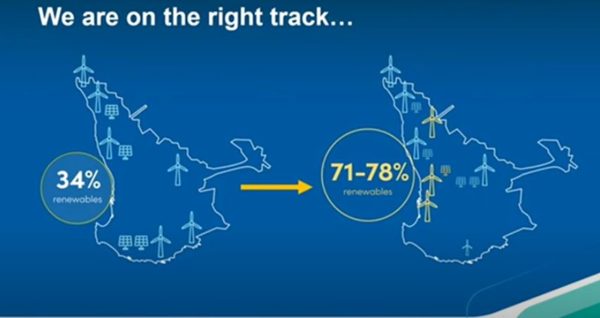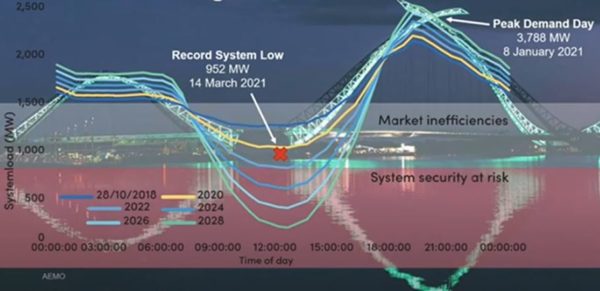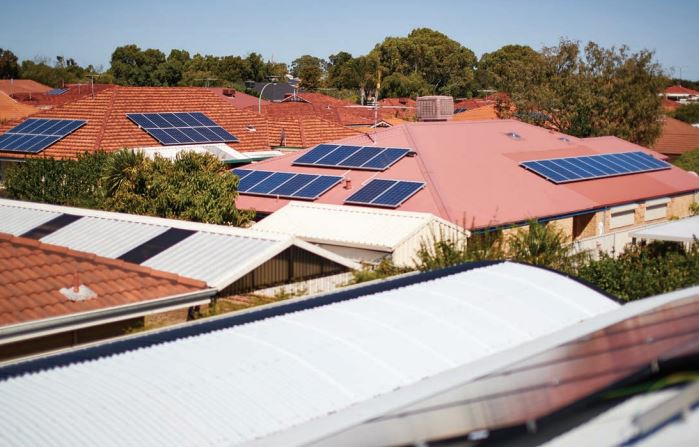The Western Australian Government has announced a $14.2 million package which will help deliver an updated Whole of System Plan as the transition to renewable energy generation continues at pace with 50% of the state’s households expected to have rooftop solar by 2030.
Western Australia’s (WA) energy sector is experiencing a rapid transformation, with one in three households now having rooftop solar panels; this is expected to reach one in two by 2030.
Energy Minister Bill Johnston announced this week that government department Energy Policy WA, which is implementing the Energy Transformation Strategy and recommendations of the Energy Transformation Taskforce, will receive $14.2 million to help fund policy and market development, long-term power system modelling, and co-ordination of the energy sector.
The funding will allow Energy Policy WA to prepare a second Whole of System Plan and also deliver the Distributed Energy Resources Roadmap, which is driving the integration of rooftop solar, household and community batteries, and electric vehicles in the state’s main electricity grid.
“We all know the energy system is transforming,” Johnston said during a speech at an industry forum in Perth on Wednesday.
“The influx of solar panels is changing everything that we do in the energy system.
“We’ve got 1 MW a week of new rooftop solar going into the system. We have to make sure the system takes account of the new dynamics.
“The Energy Transformation Strategy sets out the steps we must take to continue to modernise our system and plan for the long-term needs of our state.”
The original Whole of System Plan, prepared by the Energy Transformation Taskforce and released in October 2020, provided a 20-year forecast on the future of the the state’s principal electricity system, the South West Interconnected System (SWIS), but in the intervening months the penetration of renewable generation has skyrocketed.
Analysis from the Australian Energy Market Operator (AEMO) shows that one third of all homes in the South West Interconnected System (SWIS) now have rooftop solar installed, with the 2021 Wholesale Electricity Market Electricity Statement of Opportunities (WEM ESOO) report forecasting that rooftop and large-scale commercial solar systems will hit the 40% mark of total generation capacity by 2030-31.

According to the report WA is on track for a rapid transition of its entire power system, with rooftop solar and large-scale commercial system installations forecast to grow at an average rate of 8% (219 MW each year). That would mean that rooftop and commercial solar installations would exceed 4 GW by 2030-31.
Energy Policy WA’s coordinator of energy, Kate Ryan, described the uptake of renewable energy in the state in recent years as “phenomenal”.
“We’ve seen a 50% increase in solar PV on what was already a relatively high level of penetration and a 144% increase in large-scale renewables here in the SWIS,” she told those at the industry forum.
“We’ve got to points in time where the power system in the SWIS has been supplied by almost 80% renewable energy. The change is happening at pace.”
Ryan said the Whole of System Plan indicates the current figures are just the start with all four scenarios modelled in the plan predicting upwards of 70% renewables by 2040 in the SWIS.
“That is without including any explicit carbon policy directions,” she said.
“It’s quite likely the change we will see over the coming two decades will exceed this outlook.”
The modelling also reveals a strong uptake in wind power with battery storage to also play a big part in the grid’s future, helping stabilise the system as well as unlocking new markets.
While Ryan welcomed the high penetration of low emissions energy in the state’s main power grid she said it does present challenges which must be addressed.

Image: Energy Policy WA
Peak demand remains an issue while Ryan also highlighted the challenge presented by system low demand which is occurring on mild sunny days, often in the shoulder seasons when PV output is high and customer demand is reduced.
Ryan said a 2019 AEMO report had identified the issue and indicated that without action that low demand would lead to an unstable power system by 2022-2024.
“Through the Energy Transformation Taskforce we have already taken a range of actions to mitigate and manage that potential future however we’ve had increasing uptake of solar PV in the meantime which I think has exceeded everyone’s expectations so this challenge remains,” she said.
“We need to continue to manage these challenges so we can enable the uptake of renewable energy technologies.”
Ryan said work would commence shortly on the next Whole of System Plan.
The updated version will include the government’s net zero by 2050 aspiration and will take into account changing costs of technology and updated assumptions.
Version two of the Whole of System Plan is expected to be released in late 2023.
“We have a requirement to do it once every five years but while the transition in the power sector is as rapid as it has been, we anticipate doing them more frequently than that,” Ryan said.
This content is protected by copyright and may not be reused. If you want to cooperate with us and would like to reuse some of our content, please contact: editors@pv-magazine.com.









Why don’t the power companies look at using any excess of photovoltaic electricity being fed into the grid to generate hydrogen fuel by bulk electrolysis?